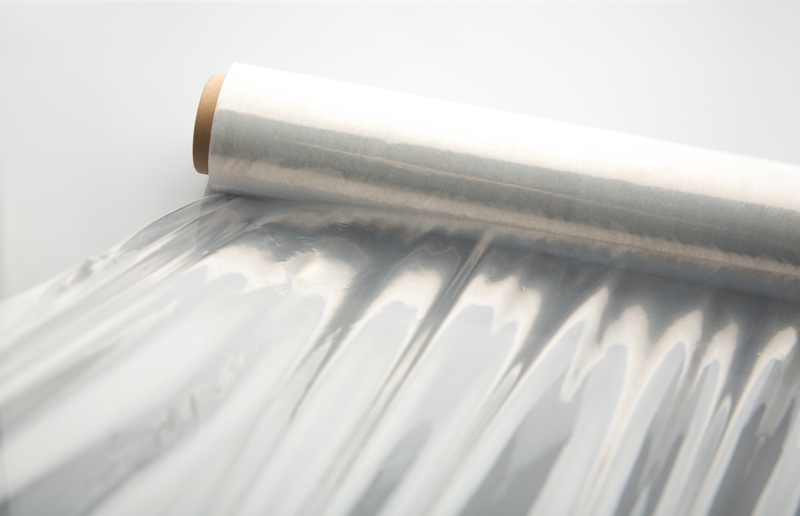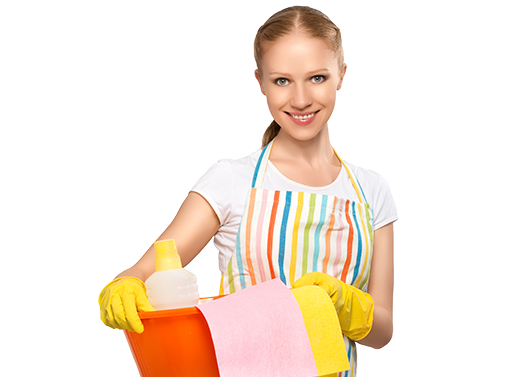Your Go-To Method for Perfectly Clean Curtains
Posted on 18/08/2025
Your Go-To Method for Perfectly Clean Curtains
Your curtains are more than just window coverings--they're a statement piece in your home's decor and a key factor in maintaining a healthy, dust-free environment. Regularly cleaning your curtains not only helps them look fresh and vibrant, but can also boost your indoor air quality and extend the life of your drapery investments. Discover the ultimate strategies for pristine, spotless, and perfectly clean curtains in this comprehensive, SEO optimized guide.

Why is Curtain Cleaning So Important?
Curtains tend to trap a variety of pollutants, including dust, allergens, pet dander, and odors, which can negatively impact the air you breathe. Properly cleaned curtains help create a more hygienic, beautiful home while maintaining the vibrance and quality of your fabrics. If you or your family suffer from allergies, washing or cleaning your curtains regularly can make a noticeable difference in your well-being.
- Reduces dust and allergen buildup
- Keeps your home smelling fresh
- Preserves the color and integrity of curtain fabrics
- Improves overall indoor air quality
- Prevents staining and discoloration from prolonged exposure to grime
How Often Should Curtains Be Cleaned?
The frequency of cleaning your curtains will depend on several factors such as the type of fabric, location in your home, and exposure to dust or pet hair. Generally, cleaning curtains every 3-6 months is recommended for most households. Homes with heavy traffic, pets, smokers, or residents with allergies may benefit from more frequent curtain cleaning (every 2-3 months).
Signs Your Curtains Need a Good Cleaning
- Visible dust, stains, or discoloration
- Persistent odors or mustiness
- Increase in allergy symptoms indoors
- Noticeable pet hair or dander accumulation
- Loss of fabric vibrancy and freshness
Understanding Your Curtains: Fabric Types and Cleaning Considerations
Before you dive into cleaning your curtains, it's essential to identify the fabric type and check the manufacturer's care instructions, often found on the label.
- Cotton or Linen Curtains: Typically machine washable, but may shrink. Use cold water and mild detergent.
- Polyester or Synthetic Curtains: Usually safe for machine washing and tumble drying. Easy to care for but check heat settings.
- Velvet, Silk, or Wool Curtains: These delicate fabrics often require dry cleaning only.
- Sheer or Lace Curtains: Hand wash or use a gentle cycle to avoid tearing or warping.
- Blackout Curtains: Often have a special coating--spot clean or follow the care label closely.
Tip: If in doubt, always spot test your cleaning method on a discreet curtain area before proceeding with the whole panel.
Your Go-To Method for Perfect Curtain Cleaning
Step 1: Prep Your Curtains
- Remove Curtain Hardware: Take down the curtains from rods and carefully remove any hooks, rings, or decorative elements.
- Shake Out Loose Dust: Take the curtains outdoors and gently shake to dislodge surface dust and debris.
- Vacuum Curtains: Use the upholstery attachment on your vacuum cleaner to go over both sides of the fabric, especially near pleats and folds.
Step 2: Choose the Right Cleaning Method
Your curtain wash method depends on the material and construction:
-
Machine Washing:
- Select a gentle or delicate cycle with cold water and mild detergent.
- Wash each curtain panel separately to avoid tangling and wrinkling.
- Use a mesh laundry bag for extra-delicate fabrics.
- Skip the spin cycle for very delicate curtains.
-
Hand Washing:
- Fill a bathtub or large basin with cold or lukewarm water and mild detergent.
- Gently agitate the fabric and carefully squeeze dirty spots.
- Rinse thoroughly, avoiding excessive wringing to prevent fabric damage.
-
Steam Cleaning:
- Perfect for heavy or dry-clean-only curtains that cannot be submerged.
- Use a curtain-safe handheld steamer and run vertically, top-to-bottom.
- This method helps remove odors, kill bacteria, and relax wrinkles.
-
Spot Cleaning:
- For stains, dab with a soft cloth and a diluted, fabric-safe stain remover.
- Test the solution first on a hidden part of the curtain before treating the visible area.
-
Professional Dry Cleaning:
- Recommended for silk, velvet, or heavily embellished drapery.
- Always take fragile or lined curtains to your trusted dry cleaning expert.
Step 3: Drying and Rehanging
Drying properly is crucial to prevent shrinkage, wrinkles, and mold growth. Here's how to do it right:
- Air Drying: Hang curtains back on their rods while slightly damp to let wrinkles fall out naturally.
- Machine Drying: Use the lowest heat or air fluff setting; remove while just barely damp for best results.
- Ironing: If needed, iron on the reverse side using the appropriate setting for your fabric.
Expert tip: Avoid direct sunlight while air drying as this can cause fading, especially in bright or dark-colored curtains.
How to Clean Curtains Without Taking Them Down
If you can't (or don't want to) remove your curtains, you can still keep them looking their best with these simple methods:
- Vacuum Weekly: Use a long-handled attachment to reach top hems and pleats. For best results, vacuum both sides.
- Steaming: Regularly run a handheld steamer over curtains to kill dust mites and relax wrinkles.
- Spot Clean Rapidly: Keep a fabric-safe cleaning solution and soft cloth handy for immediate stain removal.
- Deodorize: Lightly mist with a fabric refresher spray between deep cleans to keep your curtains smelling fresh and clean.
Dealing with Stubborn Stains and Odors
For those persistent, hard-to-remove stains or lingering odors, try these expert curtain cleaning hacks:
- Baking Soda Paste: Gently rub a paste of baking soda and water onto the stain. Let sit for 15 minutes, then gently blot away.
- White Vinegar Solution: Dilute 1 part vinegar to 2 parts water and dab onto the affected area. This method also helps neutralize odors.
- Enzyme-Based Cleaners: Specially designed for organic stains (like food or pet messes). Follow label instructions carefully.
Important: Always double-check that stain removers are safe for your curtain fabric. Spot test first!
Pro Curtain Cleaning Tips for a Spotless Finish
- Dust Weekly: Regular dusting prevents deep buildup and makes thorough cleaning easier.
- Sunshine Matters: When rehanging freshly cleaned curtains, open windows for natural ventilation, but shield from intense direct sunlight.
- Minimize Ironing: By rehanging curtains while still damp, most wrinkles fall out naturally--no ironing required for many fabrics.
- Maintain Hardware: Clean curtain rods, tracks, and hooks to prevent dust transfer onto newly cleaned curtains.
- Schedule Regular Washes: Add curtain cleaning to your seasonal housekeeping checklist for optimal results.
Your Step-by-Step Checklist for Perfectly Clean Curtains
- Read the fabric care label.
- Remove any hooks, rings, and take down panels.
- Shake out and vacuum curtains to remove dust.
- Decide on washing method: Machine wash, hand wash, steam clean, or dry clean as recommended.
- Dry according to material type.
- Rehang curtains while damp for wrinkle-free results.
- Restore hardware and enjoy your spotless drapes!
When Should You Consider Professional Curtain Cleaning?
Some curtains require extra care only experts can provide. Call in a professional curtain cleaning service if:
- You have heavy, floor-length, or very delicate curtains (like velvet or silk).
- Your curtains have linings, beads, or special finishes.
- The label recommends dry cleaning only.
- You're dealing with tough stains, odors, or smoke damage.
Professional cleaners use specialized methods and equipment for a truly deep clean and perfect finish!
The Benefits of Curtain Cleaning Services
- Deep removal of dust, allergens, pet hair, and odors
- Preserves delicate liner and fabric integrity
- Time-saving and hassle-free
- Expert stain removal and odor neutralization

Frequently Asked Questions (FAQ) About Curtain Cleaning
Q: Can you machine wash all curtain types?
No. Always check the care label. Machine washing is suitable for most cotton, linen, and synthetic curtains, but silk, wool, and lined curtains often require hand washing or professional dry cleaning.
Q: How do I get rid of pet hair on my curtains?
Regular vacuuming with an upholstery attachment, using a lint roller, or lightly dampening a rubber glove and running it over the curtain are all effective ways to remove pet hair.
Q: What temperature should I use to wash curtains?
Always use cold or lukewarm water unless the care label advises otherwise. Hot water can shrink or damage fabrics.
Q: How can I prevent curtain shrinkage?
Use cold water for washing, avoid high heat when drying, and always follow the manufacturer's instructions for your specific curtain fabric.
Q: Can I hang curtains back up while still damp?
Yes! In fact, it's highly recommended for most curtain types to minimize wrinkles and help the fabric dry evenly.
Conclusion: Enjoy Flawlessly Clean Curtains All Year Round
Perfectly clean curtains are within your reach--all it takes is the right knowledge and a bit of care. By incorporating regular maintenance, choosing the right cleaning techniques, and responding promptly to spills or stains, your drapes will remain fresh, vibrant, and dust-free for years to come.
Make curtain cleaning a cherished part of your home care routine, and enjoy a healthier, more visually stunning living space!
Looking for more expert cleaning tips for your home furnishings? Bookmark this guide and share it for future reference--the secret to perfectly clean curtains is now at your fingertips!



